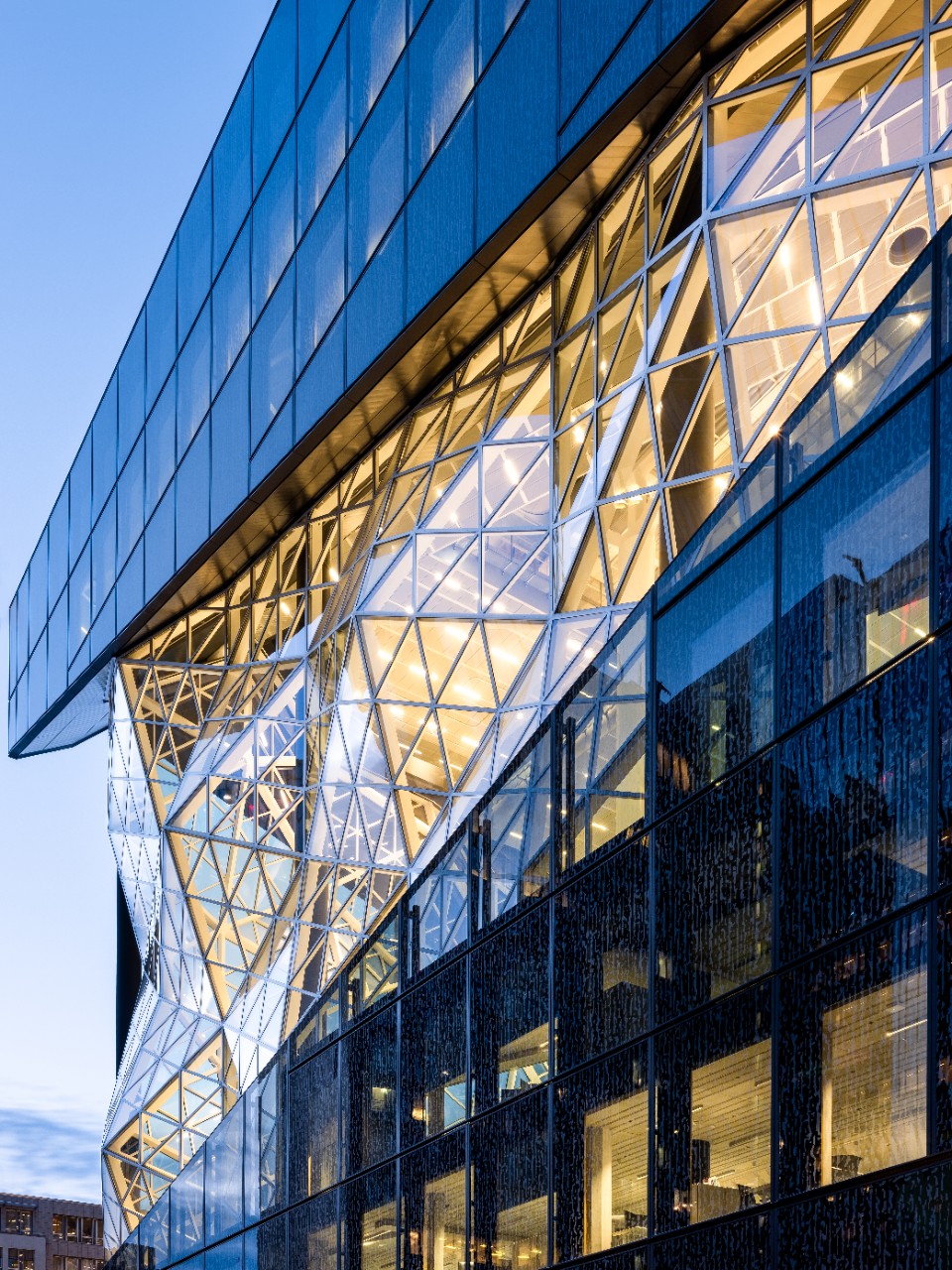Properties of glass

Most architectural glass today is produced using the float glass process. At Guardian Glass, we produce our float glass in various standard thicknesses and sizes, which can then be further processed. Float glass has specific properties in terms of color, transparency, emissivity, strength, pressure resistance, heat resistance, and chemical resistance. By laminating or coating the glass, we can add properties that allow the glass to perform and look its best for your project.
Properties of laminated glass
Laminated glass consists of sheets bonded together using a plastic interlayer. The glass and interlayers can be supplied in a variety of colors and thicknesses. And it’s not just basic float glass that can be laminated – there are many possibilities.
By laminating the glass, other beneficial properties can be added to the base glass such as color, sound control, safety and security.
Safety and protection
While laminated glass can still break, the fragments tend to stick to the plastic interlayer and remain largely intact, reducing the risk of injury, particularly when there is a risk of broken glass falling from high-rise buildings. The process of producing laminated glass typically involves two thoroughly-cleaned glass lites being bonded to a central interlayer under heat and pressure within an autoclave.

Properties of coated glass
Surface coatings can be applied to float glass to modify its appearance and improve its properties, such as providing it with special reflection or light transmission.
When energy hits an object, they can be either reflected, absorbed or transmitted through it. Coatings can be applied to float glass to manipulate this and provide the glass with specific functional and aesthetic properties. Glass coatings are generally designed to reflect solar infrared wavelength while transmitting visible light.
Energy efficiency, comfort and wellbeing
Coatings add properties to float glass that help enrich our lives and contribute to more energy efficient buildings. In cool climates, the insulating performance contributions of low-e coatings can facilitate solar heat retention within buildings, reducing their energy costs.

Properties of solar control glass
Solar control glazing within warm climates can help prevent excessive heat build-up during the warmer summer months by blocking out most of the sun’s solar energy, while still allowing natural daylight through. This often means the glass can help lower energy bills, while providing greater comfort and wellbeing for occupants throughout the year.
This might lead us to ask what the advantages of using glass as a building material are. What benefits, beyond aesthetics, can glass bring to building occupants in terms of comfort, wellbeing and safety? To find out more, see our ‘Benefits of Glass’ section.


.tif.transform/rendition-470-280/img.jpg)
